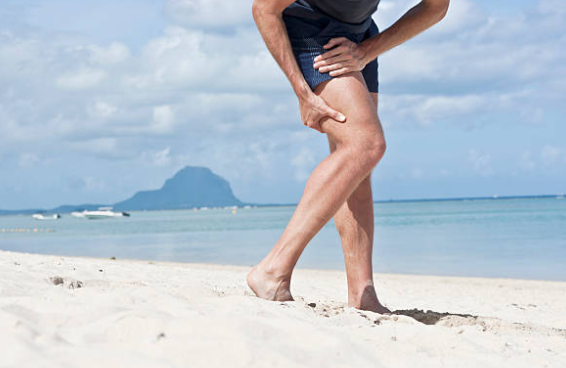The hamstrings are made up of 3 muscles that are located at the back of your thigh. These muscles work together to bend the knee and extend the hip. You use your hamstrings when you are walking, running, jumping and performing squat movements. Hamstring muscles are one of the most common injuries that occur in sports.
In a sporting context, the hamstrings are responsible for slowing the leg and preparing you to come to a stop during a running movement. You can imagine how hard your hamstrings have to work when you have to suddenly stop and change direction in soccer. The hamstrings can also be seen when you land from getting a rebound in basketball. When the muscles are not strong enough for the sport or activity then a hamstring strain can occur. These injuries usually have long recovery times. The ability to have strong hamstrings will decrease your risk of a strain and ACL injuries.
How do I know if I strained my hamstrings?
An experienced physiotherapist will be able to take a detailed history and assessment to determine if you have strained your hamstrings. MRI and ultrasound are imaging devices that can also be used to determine the extent of the injury.
Common signs and symptoms include:
- The injury is caused by a sudden deceleration/stop when playing sports.
- Pain localized at the hamstrings
- Swelling at the back of the thigh
- Inability to run without pain
- Unable to straighten the injured leg without pain.
How do I heal my hamstring strain?
The process of healing the hamstrings involves 2 main components. We need to restore the hamstring strength and build up the strength of the hamstrings. It is important to note that hamstring stretches should be avoided in early stages of the injury because the muscle fibers are trying to heal, you do not want to irritate it by pulling on the muscles. The location and size of the strain will determine how long it takes for the hamstrings to heal. Your hamstrings may feel a bit better with rest but it does not address the hamstring weakness. A progressive strength rehabilitation program is required to help heal the hamstrings and prevent re-injury. An experienced Myphysio physiotherapist will be able to provide you with the appropriate exercise program.
Once you have restored the strength and length of the hamstrings then it will be time to add some sports specific exercises to introduce your hamstrings back into your sport. A maintenance program will also be given to you so you can keep the hamstrings strong. Popular hamstring programs are the Askling hamstring protocol and the Aspetar hamstring protocol. It is recommended that you perform hamstring exercises 2-3x a week if you have a history of hamstring strains.
If you have issues with your hamstrings and would like an experienced physio to help design an individualised program for you, book an appointment with one of your friendly physiotherapists today.
References:
Askling CM, Tengvar M, Thorstensson AAcute hamstring injuries in Swedish elite football: a prospective randomised controlled clinical trial comparing two rehabilitation protocolsBritish Journal of Sports Medicine 2013;47:953-959.

